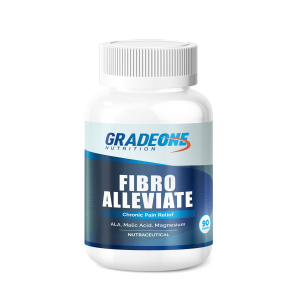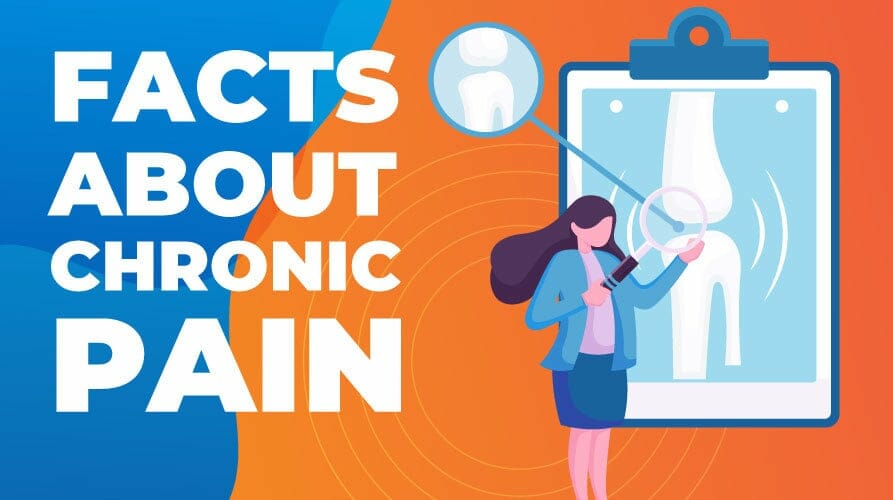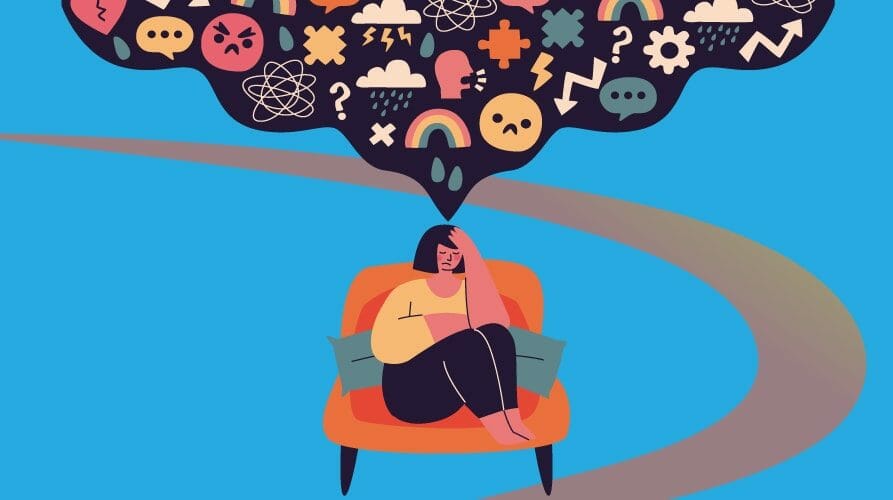Strangely enough, nowadays not many know or are educated by the health system in India about the countless undisclosed and very common disorders that affect us all. We silently suffer not knowing what ails us and we just let it pass and pop pills that make us temporarily feel better. We never stop to think and try to listen to the warning signals our bodies try to give us, and that’s exactly what happened to me.
For many years I mistook my maladies for being something less serious than what I had expected. As I was previously diagnosed with low vitamin D3 and calcium, which is extremely common in India, I continued taking supplements for them, but somehow the symptoms kept getting worse. The cold weather would affect me horribly and very often would be in bed for days assuming I was down with some flu that was going around. My muscles and bones would hurt to a point I had trouble even holding a cup of coffee. It was until a few years later when the symptoms got worse, it was then that I decided to google and find out what else could it be. Coming across many search finds, I somehow narrowed it down to Arthritis, Lupus and Fibromyalgia (AKA Fibrositis).
After consulting a general physician, it was advised that I consult a Rheumatologist. Little did I know my entire lifestyle was to change dramatically! My priorities, my aims and my daily routine were all in for a major revamp. That’s what you will all face when dealing with Fibromyalgia but trust me though it is a very trying disorder to deal with, there is definitely a technique to follow in order to live a balanced life and all you need to do is, never give up on yourself!
What is Fibromyalgia?
Fibromyalgia is a disorder that is characterized by widespread musculoskeletal (meaning both Muscle and skeleton) pain, fatigue, sleep disorders, memory loss and mood issues. It is believed that Fibromyalgia amplifies painful sensation by affecting the way your brain processes pain signals. The symptoms are rather exhausting as they affect your entire body and are listed below.
Symptoms
- Muscle pain, twitching, burning or tightness
- Low pain threshold and Tender points
- Fatigue and feeling completely drained out
- “Fibro Fog” the term used for the memory issues one faces wherein you have trouble concentrating and remembering.
- Insomnia (which unfortunately for me has become permanent)
- Constant feelings of nervousness, anxiety, worry and depression
- Migraine or tension headaches
- Irritable Bowel Syndrome
- Bloating
- Queasiness
- Sensitivity to cold, heat, light and sound
- Frequent urination
- Dry, nose, mouth and eyes
- Numbness or tingling on your face, arms, hands, legs or feet
Although it is currently debated as to what causes the onset of Fibromyalgia, the most suggested reasons are after facing physical trauma, surgery, infections or psychological stress. Research shows that the majority of woman suffer from Fibromyalgia than compared to men. Diagnosing Fibromyalgia is extremely tricky! The symptoms are similar to other conditions and it’s imperative your doctor rules them all out systematically to narrow it down to Fibromyalgia. For me, it took almost 2 months to figure out what exactly it was, as most of my symptoms were pointing towards Lupus.
So, my advice to you is to find a good Rheumatologist who patiently understands your family history to dismiss the chances of it being an underactive thyroid, type of arthritis or lupus. The specific blood tests and x-rays would help determine it for sure what exactly it could be. And it’s important to know that if in case the doctor is still unable to understand what ails you, they follow a procedure called the Two-part scoring system to measure how widespread your pain actually is and how it affects your daily routine. And from thereon would suggest a pain management plan to help control your condition.
Unfortunately, there is no cure for Fibromyalgia and it’s something one has to live with for the rest of their lives. This truly changed the entire outlook of my life! How was I to deal with this? What was I going to face in the coming months? To be honest my first Rheumatologist wasn’t very explanatory during my diagnoses which left me very confused, perturbed and scared.
Unfortunately, in India, there hasn’t been much wider awareness of Fibromyalgia. Although it operates in similar prolonged lifelong symptomatic conditions as most Autoimmune disorders do, however it’s not yet categorized as one since it doesn’t cause much inflammation. Also as explained to me by my current doctor, Fibromyalgia not having any specific aetiology (the cause, set of causes, or manner of causation of a disease or condition) cannot be categorized as an Autoimmune disease and currently remains a Miscellaneous disease.
As Autoimmune medications usually work to eradicate harmful cells, whereas in Fibromyalgia this doesn’t work. Proper awareness for Fibromyalgia is non-existent in India, not only as it very hard for me to truly understand that gravity of what I was going through but it was perplexing for people around me to understand this and be more sympathetic towards this very painful lifelong ailment that is hard to notice by first glances since we don’t have any visible symptoms.
I stress on the imperativeness on finding the right doctor for you who can guide you through this. It is very unnerving to live with a disease that’s incurable and very painful, it indefinitely plays havoc to one’s peace of mind. But no matter what obstacles we face and when all seems lost, always remember there is a way out, there is always a solution to a problem and that there is always light at the end of the tunnel.
Living with Fibromyalgia and what to expect?
The most common issue, you will first face is the morning stiffness. The pain mimics itself to be similar to other disorders such as osteoarthritis, bursitis and tendinitis, the only difference is the pain doesn’t contain itself to a specific area but rather reflects throughout your body. It takes me quite a while to wake up in the morning, as the stiffness and pain can really make one completely immovable. The muscles tend to become extremely sore especially if you lay in one position for too long, so get ready for a lot of tossing and turning at night. After a while, it just becomes a habitual way of sleeping.
Sleep deprivation is what we all majorly face when dealing with Fibromyalgia. Your doctor might prescribe you a sleeping pill to help deal with insomnia when it becomes severe, but however, wouldn’t ever advise you to continue it for more than a few days tops! I started reacting to my sleeping pill and had to stop it completely, luckily, I did find a solution which you will find in the further part of this article, where I will share my personal tried and tested hacks to dealing with the symptoms and especially the much dreaded ‘Fibro Flare-up’ phase!
The real treatment for Fibromyalgia!
Many may assume that there is a series of medication that would help you get by, but get ready for a serious shocker! These medicines are primarily used to help control symptoms but can never cure them. The most commonly prescribes drugs are Duloxetine, Milnacipran and Pregabalin, which after a while your doctor would not recommend you get dependent on and would usually advise you to take them only in cases of a Fibro Flare up, which makes it an SOS prescribed drug and here’s why!
Know your drugs
- Pregabalin: Is also used to treat neuropathic pain associated with Diabetic Peripheral neuropathy (nerve damage caused by chronically high blood sugar that leads to numbness, loss of sensation, and sometimes pain in your feet, legs, or hands) and Postherpetic neuralgia (a painful condition that affects the nerve fibres and skin) also used to treat seizures in adults when combined with other drugs, Pregabalin is also an anti-epileptic drug.
Side effects of Pregabalin: fatigue, drowsiness, fluid retention (oedema), blurred vision, double vision, weight gain, abnormal gait, tremor, difficulty concentrating, increased appetite, gas, amnesia, disorientation, myoclonus (sudden, involuntary jerking of a muscle or muscle groups), heart failure, low blood pressure, reduced blood platelet counts, and increased blood creatinine kinase levels.
- Milnacipran: is a selective serotonin and norepinephrine reuptake inhibitor (SNRI) antidepressant. Milnacipran affects the neurotransmitters and the chemicals that the nerves within the brain make and release in order to communicate with one another.
Side effects of Milnacipran: headache, insomnia, flushing, excessive sweating, palpitations, increased heart rate, and high blood pressure. Withdrawal symptoms do occur when you stop taking these drugs.
Warning issued by medicinenet.com in regards to taking Antiepileptic medications: Since they have been associated with increased risk of suicidal thinking and behaviour. Anyone considering the use of antiepileptic drugs must balance this risk of suicide with the clinical need. Patients who have started on this therapy are closely observed for clinical worsening, suicidal thoughts, or unusual changes in behaviour.
- Duloxetine: is an Antidepressant and is also used to treat anxiety, pain from diabetic nerve damage and Fibromyalgia. Duloxetine is a serotonin-norepinephrine reuptake inhibitor (SNRIs). It helps in increasing the levels of neurotransmitters serotonin and norepinephrine which assists in regulating the mood and blocks pain signals travelling through the brain. In 2013, the Food and Drug Administration (FDA) approves generic versions of Duloxetine for several pharmaceutical companies. Research showed that Duloxetine had considerably lesser side effects as compared to traditionally used drugs to treat this condition.However, the FDA clearly carry a Black-Box Warning about the risk of suicide among people who use this drug. Duloxetine is believed to increase the risk of suicidal thoughts and behaviour if you are 24 years old or younger, hence it’s not prescribed to anyone younger than 18 years. These drugs are never recommended to be used for long term treatments.
Side effects of Depression with Duloxetine include – Thoughts of suicide, irritability, panic attacks, extreme worry, restlessness, acting without thinking and abnormal excitement.
Side effects of Duloxetine as Withdrawal symptoms occur include – Nausea. Anxiety, dizziness, headache, tingling and numbness, insomnia, sweating and nightmares.
It’s also never advised to take this drug if you suffer from, liver problems, eye problems, frequent use of alcohol, heart problems, high blood pressure, seizures, drug abuse, bipolar disorder, kidney disease, abnormal bleeding or a family history of suicide.
Your doctor would always advise you to only use these drugs in an SOS situation only and not long term! The most important lesson you must learn is that these are not going to cure you but only subside the symptoms to give you a moments peace, however, learning how to balance your life and your daily routine is the key to actually mastering the art of true pain management. This is exactly where alternative healing therapies come into play. Allopathic medications are not the only way to help deal with your pain, your new best friend could be a fun activity or a new kind of herbal Tea you never thought of trying out.
So, what exactly is a Flare-up? Why do we get them? What should you do to prevent yourself from having one of these nasty episodes?
Fibro Flare-ups!
A Fibro Flare-up is when there is a temporary increase in the intensity in most or all of the symptoms associated with Fibromyalgia. It usually starts as worsening fatigue then slowly and gradually additional symptoms occur such as insomnia, Fibro Fog (cognitive dysfunction) digestive issues such as acid reflux, swollen extremities, numbness and tingling.
Usually, these attacks can last from a few days to weeks to even months. To prevent Flare-ups, it’s absolutely critical that you try to identify what triggered them and work on a lifestyle that protects you from such exposure in the future. Here’s all you need to know on what could be your Fibro Flare Up trigger!
Flare-up Triggers
- Changes in temperature: Sudden exposure to extreme heat or cold is the most common trigger.
- Increased exertion: This is tricky! As it advised to always have a healthy exercise routine while dealing with Fibromyalgia, knowing how much is too much is very important. Moderately but routinely is the safest way to go!
- Injury or Illness: An infection can also cause a flare-up if either facing an injury or illness it is advised to consult a physician.
- Stress: Any kind of emotional or physical stress leads to a flare-up
- Sleep issues: Fibromyalgia is known to cause insomnia if you have difficulty in getting decent sleep for long periods of time this triggers a flare-up.
- Travel: Travelling brings on exposure to multiple triggers such as a change in diet, temperature and interrupted sleep.
- Treatment changes: Change or medication or treatment regime also causes a flare-up.
My tried and tested Personal Hacks for dealing with Fibro Flare ups!
- Bathing: Always be alert when you sense a change in weather. Your Bathing water has to be the right temperature depending on the weather. They can trigger Fibro Flare-ups almost instantly! Patiently blend hot and cold water every time you bathe. Test a little over your arm and it should feel just right without even a sheer sensation of it stinging either hot or cold.
- Tingling sensations: I get a lot of tingling on my feet especially after playing football, it makes you feel very itchy! I rub an ice pack all over my feet and it seems to help tremendously! And in winters apply winter cream on the affected area and massage it gently and let it be uncovered for a while, it subsides.
- Musculoskeletal pain: I get frequent massages done and try to sleep for while soon after. You wake up feeling much relaxed and refreshed!
- Depression: This is always tricky! But definitely something you can control! Whenever I am feeling low, I immediately eat a bit of chocolate or ice cream. I cook myself something really nice or just order out and surround myself with something relaxing. Could be a conversation with my bestie, a nice feel-good movie or just wait to be cuddled by someone special.
- Anxiety and Migraine headaches: I suffer from this quite often and what seems to work for me, is a complete switch off! I put some deep relaxing meditative music, light some essential oil and practice Zen meditation, which could also be done by lying in bed, eyes closed and inhaling and exhaling in deep. This is the best way relax your mind!
- Dressing: Always keep extra warm in winters and cool in summers while protecting yourself from the Sun. Cold definitely plays more havoc to the body as compared to heat, but you must know how protect yourself from both.
- Insomnia: I ditched my sleeping pills soon as I reacted to them and started to follow a more natural approach. Ayurveda medicines that have a blend of the right herbs that are known to help with relaxing the mind and the nervous system is what that actually worked wonders! They are available at your drugstore and though they take time to take effect, after a few weeks of using them I find myself much relaxed and does help with my sleep. If only there was a natural remedy for all the symptoms of Fibro flare-ups!
Also, from my personal experience, I would never recommend you to join an Online Fibromyalgia support group. I used to be part of one such group on a social network platform and it was more depressing than ever! It was helpful in sharing your experiences and ask basic questions, but when it’s not monitored by proper medical professionals, it just turns into an “Agony Aunt” section, where at times people become very irrational, overdramatic, highly depressive and in-plane quite annoyingly stupid with their queries. I would advise you to have a healthy Patient/doctor relationship with you rheumatologist wherein you know true facts of all your doubts.
How did I find balance amongst the chaos?
When there is no cure for Fibromyalgia and only medications help temporarily control the symptoms. You would need to make serious changes in your lifestyle to help deal with it. So how did I do it?
The first few months were difficult! It was not easy understanding how was I supposed to live with pain for the rest of my life! As expected, I got into further depression which resulted in more pain. The days I tried to be calm and happy, I seemed to get by well.
The best advise I’d give to you is that you need to put yourself first. You can’t take back seat anymore! The first thing you will do is to identify all that makes you calm, relaxed and happy! It can be anything, from reading a book to watching a movie to doing something creative or artistic! Remember an activity which you absolutely love, is what’s going to help you be balanced. It might be a big jolt to know that you no longer would be a “morning person” as you will often wake up with aches, pains and stiffness around your body.
Many I know who deal with Fibromyalgia have given up working a 9-5. Here is when you make drastic changes to your life! Work from home, start a new project and always keep yourself busy doing something you are passionate about. For me it was easy! I love to write, sing and play football! A few months ago, when I discovered coaching lessons were available at my society, I didn’t waste a moments time and signed up! Trust me it was agony just to run for ten seconds, but my love for the game is what kept me happily motivated. And that’s exactly what you need to figure out for yourself, find a physical activity that makes you happy and diverts your mind from all negative emotions. It is never easy hearing people tell you to be active when you live life in constant pain, but when you muster up the courage to give it a try don’t give up! After a while, you will realise, that the days you avoid working out are those days that the pain feels more amplified even if you’re not going through a fibro flare-up.
As I write this article to you, I have been suffering through a flare-up that’s lasted two weeks now. I have very calming soothing romantic music playing in the background, sitting comfortably in a cushioned chair with lovely white lotus essential oil burning. This what you need to work on, understanding all that makes you happy, calm, relaxed and even feel loved! Surround your life with them, this is where you will start focusing and putting yourself first. Your lifestyle will change when dealing with Fibromyalgia this is something you need to accept. Support from friends and family is important and although I do it by myself, I never stop keeping those who are special near to me. They are that right balance you need to get through it. And always remember don’t ever give up, a few baby steps every day to work on proper pain management and learning to keep yourself happy is the way to go!
Happy Healing Ya’ll!!!







